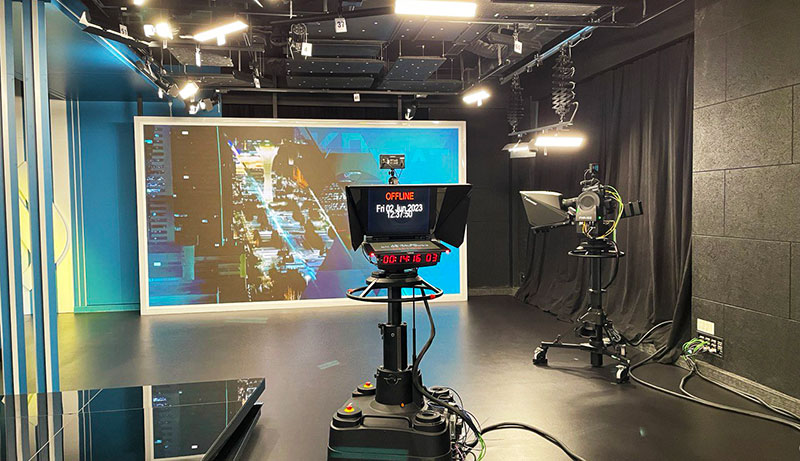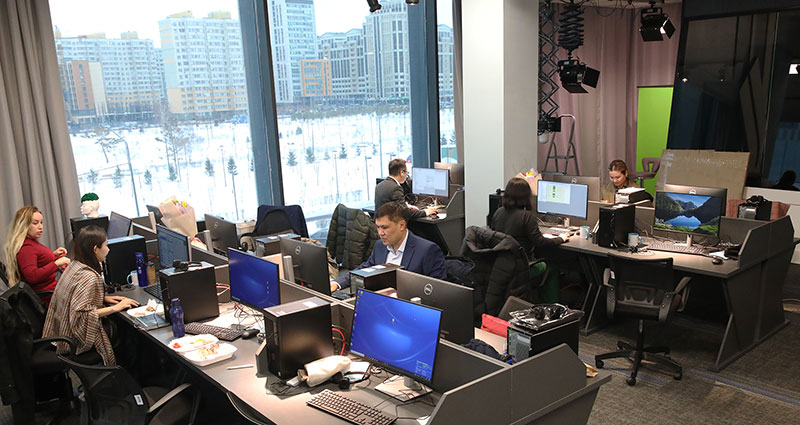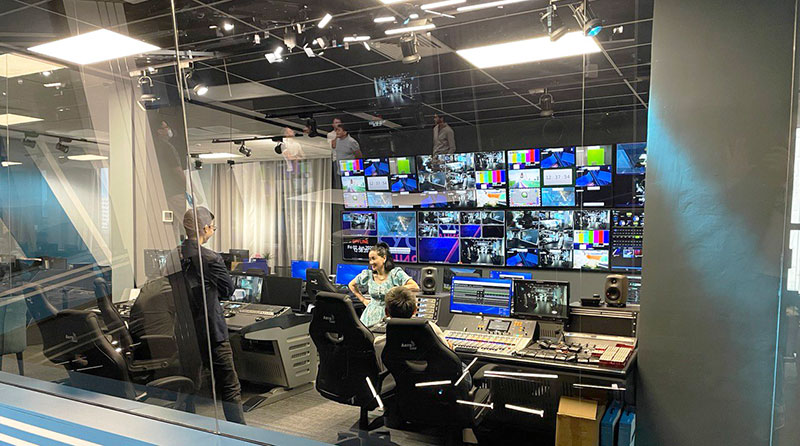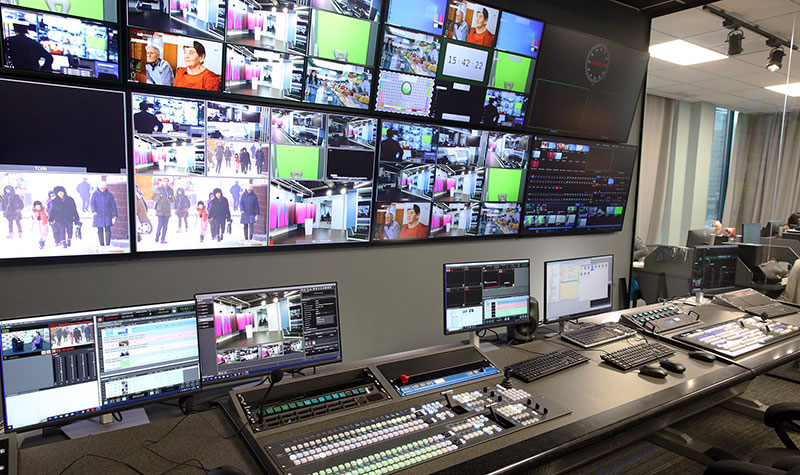Kazakh channels Jibek Joly and Silk Way, formerly located separately using disparate systems, now operate from an integrated Cinegy environment for news production, playout and archive.

Kazakhstan television channel Jibek Joly and international service Silk Way were previously based in separate locations and used a variety of systems for production and playout. Over the past year they have moved to a new combined headquarters, with the aim of establishing a common working environment for news, production, playout and archiving.
All aspects of the two channels have been brought together in a new broadcast centre for the TV and Radio Complex of the President of the Republic of Kazakhstan (PTRK), in a new building in Almaty. For this project, led by DNK Kazakhstan, Cinegy has supplied all of the core functionality at the centre.
PTRK had some earlier experience with Cinegy software, but the new system stands out in that it gives access to all the necessary broadcast functionality from a single environment. Cinegy software is used at a number of other broadcasters in Kazakhstan, which also gave PTRK confidence that the system would be readily supported. Finally, the single-source system is expected to be cost-effective over the lifetime of the system.
“One of the critical advantages of Cinegy for us is that it is very user friendly,” said Yernar Ibragimov, CTO of PTRK. “The straightforward design makes the system efficient and easy for most people to learn, speeding up the training process for new employees. Today about 100 Cinegy users work simultaneously, and we produce as much as 40 hours of content daily.”
DNK Kazakhstan developed a proof-of-concept system for PTRK, then supplied all the hardware and software licences for the full system. It includes Cinegy Air PRO for playout, Cinegy Convert PRO for signal processing, plus Cinegy Multiviewer, Cinegy Route, Cinegy Prompter and Cinegy Archive Enterprise.

Cinegy from the Desktop
More than 75 Cinegy Desktop licences are also included in the package, a comprehensive production tool that runs on standard IT infrastructure and can be installed on user desktops within a networked environment. This means users can collaborate from desktops without involving editing bays. The system’s full functionality is available from any workplace, editing bay or machine room, making the environment very flexible.
Starting with real-time access to media in Cinegy Archive, users create, manage and edit items in the central database. A suite of tools is included for logging and editing and, most important, for media import and export to third-party NLE and automation systems.
User logins and passwords are centrally managed and determine each person’s access rights, user profile and software features. For ease of use, the Cinegy Desktop user interface matches standard Windows functionality as far as possible.
Users also have standard controls for viewing material, including playback controls. A clip can be viewed at different quality levels, defined during ingest. Logging is applied either during or after ingest into Cinegy Desktop, including advanced logging through a plug-in, with custom logging templates for specific tasks.

The software has its own asset management client and accumulative metadata collection methods. For instance, ingested video clips automatically inherit information including tape or disk reference IDs, cameraman, date, program name, rights, resolution, type and so on. Further information can be added to clips with a customised metadata model. Cinegy Desktop’s search engine locates video media and documents fast, even in very large archives, using keywords or metadata values, and advanced searches can be designed to generate very precise results.
Efficiency
“With Cinegy, the customer can handle all content production stages in a single infrastructure,” said Mike Efimov, International Sales Manager for Cinegy. “Consequently clients can focus on the creative aspects without worrying about the complexities of integrating different systems.
“What it means for the production and broadcast teams within PTRK is efficiency. Because the work doesn’t need to be handed off from one system to another, most workflows, from editing to publishing, run faster. It also means you do not need to store content in multiple locations, so media management and storage become more efficient, saving the cost of hardware and the space to operate it.”

Yernar Ibragimov of PTRK said, “I am impressed by the Cinegy system’s versatility and high performance. We can rely on it to continue running, even when processing large amounts of data, which gives us confidence that our production process will be smooth and unified.”
PTRK and its broadcast channels moved into the new centre earlier in 2023 and have been able to rely on the Cinegy integrated system since then. www.cinegy.com





